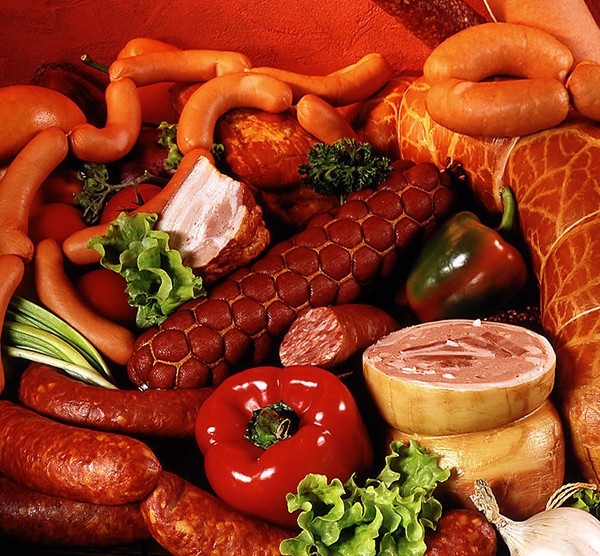GUANGDONG KELONG BIOTECHNOLOGY CO., LTD.
Add: No.5-17 and No.5-32, South area of Qibao Industry and Trade, Huicheng, Xinhui, Jiangmen, Guangdong, China
Tel:+86-750-6978788
Fax:+86-750-6978868
Wechat: 13828063050
Website: http://www.kelongbio.com
Email: export@kelongbio.com
marketing@kelongbio.com
In general, the source of color in food comes from the rich natural pigments in the ingredients, and on the other hand thanks to the evolving modern food industry. The food processing industry can synthesize colorful artificial colors through modern technology.
Pigment = unhealthy?
1. Natural pigment, high safety
Natural pigments are obtained by physical extraction from plants, microorganisms, and edible parts of animals. The development and application of natural pigments is a trend in the world today. Natural colorants are generally more expensive and less stable, but are more safe than artificial colorants.
From the natural pigments contained in the food itself, not only the source of the color is relatively safe, but also a lot of beneficial effects. For example, the most common natural pigments, polyphenolic pigments, including anthocyanins, leucocyanidins, flavonoids, catechins, etc., not only make fresh vegetables and fruits look charming and attractive, but also very Strong anti-oxidation, anti-inflammatory, anti-aging and other effects! In the case of anthocyanins, different amounts of anthocyanins allow peaches, strawberries, mulberries, blueberries, purple potatoes, purple cabbage, red leeks and other fruits and vegetables to present a variety of colors from pink to blue-violet, while also giving these fruits a tender Skin, beauty and other effects.
2. Artificial pigment, cautious intake
Artificial colors commonly used are amaranth, carmine, lemon yellow, sunset yellow, bright blue and the like. Artificial pigments are safe to use within a limited range, and their color is bright and stable, suitable for color matching and compounding. Low price is its advantage, but safety is still a problem and has no nutritional value. Therefore, it is generally not suitable for use in meat processing.
At present, food safety management agencies in various countries generally believe that whether it is natural pigment or artificial pigment, as long as it is added according to the standard dosage prescribed by the state, it will not cause much harm to health. With the continuous advancement of technology, artificial pigments can not only be as beautiful as natural pigments, but also can synthesize some natural pigments that are rare in fruits and vegetables. Coupled with the low cost, not easy to change color, compared with natural pigments, it can be considered a different.
In particular, artificially synthesized pigments are more brilliant in color and less prone to discoloration. From a nutritional point of view, long-term intake of foods containing a large amount of synthetic pigments may lead to accelerated loss of zinc in the human body, affect mental development, and may increase the risk of ADHD in children. In addition, although the current research evidence is not enough to be used by the US Food and Drug Administration, the European Food Safety Authority and other authorities as the basis for modifying the daily allowable intake of artificial synthetic pigments, but because of the addition of artificial synthetic pigments It is often a deep-processed food with high sugar and fat content, so it is necessary to remind everyone that if you choose food with color, please try to choose those products that are processed with natural pigments. Because the composition of artificial colors is relatively complex, additional “health risks” have to be considered.
How to identify natural pigments?
1. First, there is a simple technique to help you avoid products that contain too much artificial color when you choose food in the supermarket. In general, the “Ingredients Table” column of the food label indicates which pigment is added to the food. Most of the pigments with strong modified vocabulary in the names such as “Sunset Yellow”, “Temptation Red” and “Bright Blue” are artificial pigments; while the names of natural pigments often show their sources of extraction, such as capsanthin. Lycopene, Monascus pigment, theaflavin, curcumin, astaxanthin, and the like. But be wary, this is just a general rule, and there are also artificial colors like "Lemon Yellow" that look like natural pigments.
2. For pigments that have no label or look at the name, we can use a simple experiment to identify. Natural pigments are highly susceptible to discoloration due to storage and processing conditions. For example, anthocyanins are water-soluble pigments that are very sensitive to the pH of water environments. They are usually red in acidic water and blue in alkaline water. We can use this feature to create an acidic or alkaline water environment using vinegar and baking soda in our kitchen to check whether the food is discolored under acid or alkaline conditions to confirm whether the pigment contained in it is a natural pigment.
For example, there have been news reports that a woman soaked peaches with baking soda and wanted to remove pesticides. The result turned out that the peaches turned purple-black, which is the phenomenon that anthocyanins turn blue in alkali. When the concentration of baking soda is high, it may appear darker in color. Some friends also like to add a little vinegar when frying purple cabbage, and found that the anthocyanins in purple cabbage showed a beautiful pink color.
In addition, when a polyphenolic dye is combined with a metal ion, a compound of gray, grayish blue or grayish black is also produced. If you use a wok to fry red leeks, you may end up harvesting a plate of gray-blue vegetables. However, these reactions just prove that the pigment in food comes from pure natural. This compound produced in the reaction will not only affect the appearance of food, but also affect the quality of food, and will not cause harm to people's health.
In short, people have a natural preference for high-value foods, but for health, you should make a wise choice, try to choose natural, nutritious foods.
